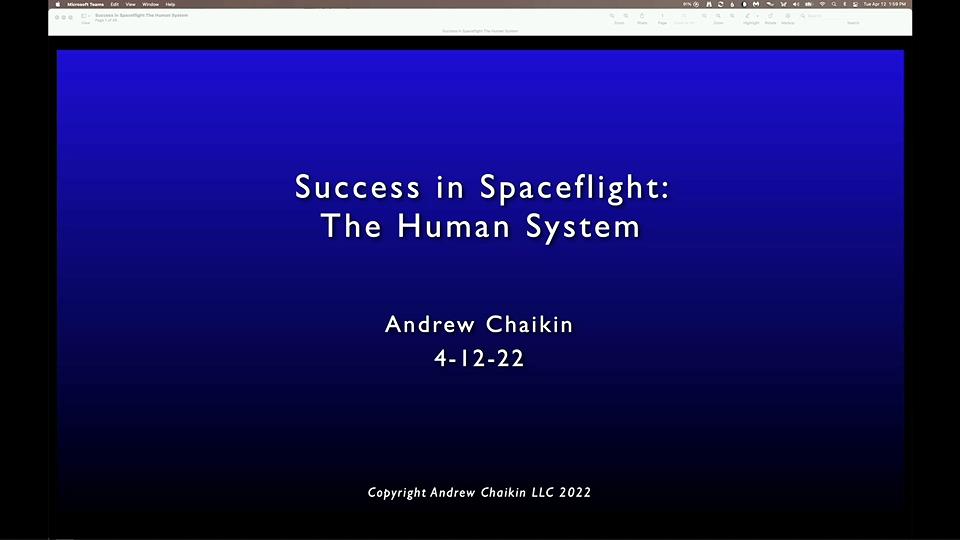Humans to Mars, But How Many? A Historical Review of Crew Size Determinations for Mars Missions
Discipline: Human Factors
Abstract:
Three-quarters of a century have passed since the first engineering study of a human mission to Mars in 1948. During that time, dozens of study teams at NASA, its contractors, and other organizations in the U.S. and abroad have confronted what NASA mission architect John Connolly and his colleagues have called “the ultimate systems challenge.” This historical review of those studies focuses on the question of crew size and its relationship to crew workload.
About the Speaker:
Space historian Andrew Chaikin is best known as the author of A Man on the Moon: The Voyages of the Apollo Astronauts, which tells the stories of the Apollo missions through the eyes of the astronauts. The book was the main basis for Tom Hanks’ 12-part Emmy-winning miniseries for HBO, “From the Earth to the Moon.” A graduate in geology from Brown University, Chaikin has brought his knowledge of planetary science to his writing and teaching. As a visiting instructor at NASA he has taught the history of human and robotic space missions, as well as the human behavior aspects of success and failure in spaceflight projects.



